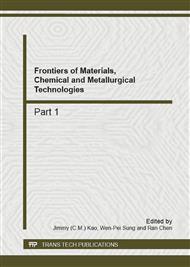p.387
p.391
p.396
p.401
p.405
p.410
p.414
p.418
Impact of Melt Spinning on Electrochemical Hydrogen Storage Characteristics of Mg20Ni9M1 (M=Cu, Co) Alloys
Abstract:
The melt-spinning technique is used to fabricate the Mg20Ni9M1 (M=Cu, Co) alloys with nanocrystalline and amorphous structure. The microstructures of the as-spun alloys were characterized by XRD and TEM. The electrochemical hydrogen storage properties of the alloys were measured. The results show that the as-spun (M=Cu) alloys hold an entire nanocrystalline structure and small amount of amorphous phase is visible on the grain boundaries of the as-spun (M=Co) alloy. The discharge capacity and high rate discharge ability (HRD) of the alloys visibly grow with the rising of the spinning rate. The action of the melt spinning on the cycle stability of the alloys is associated with substitution element. For M=Cu, the capacity retaining rate (SN) evidently falls with the growing of the spinning rate; whereas for M=Co, it first declines and then augments.
Info:
Periodical:
Pages:
405-409
Citation:
Online since:
October 2012
Price:
Сopyright:
© 2012 Trans Tech Publications Ltd. All Rights Reserved
Share:
Citation:


